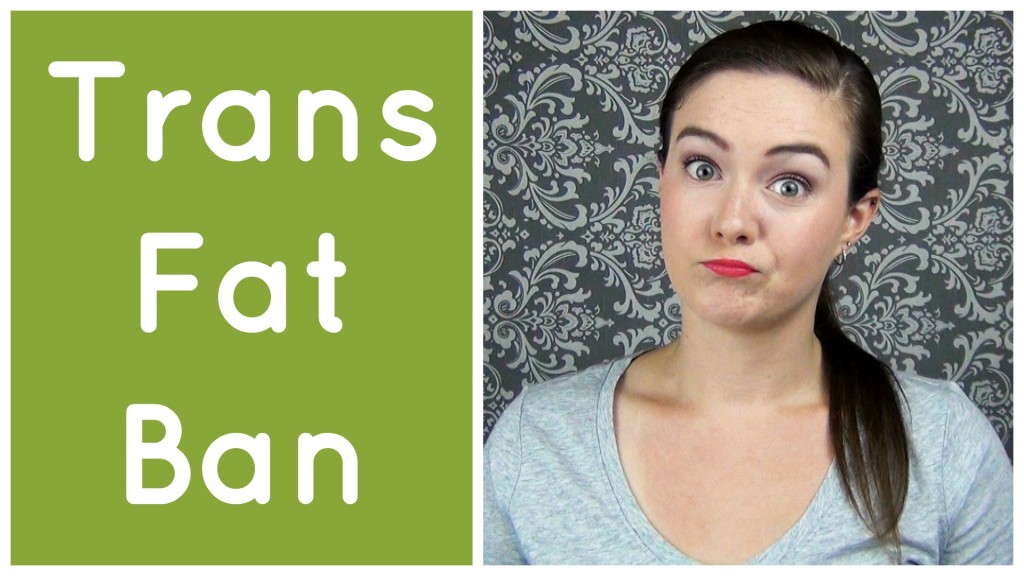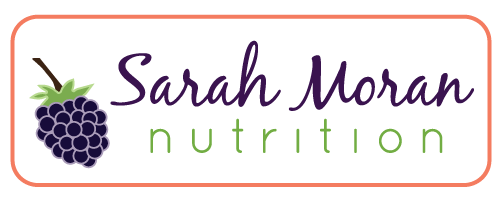 You've likely heard about the danger of trans fats on the news or seen products that proudly display "0 grams of trans fat per serving" on their packaging. But what are trans fats and how bad are they really? First, we need to start with a little chemistry. Fatty acids can either be saturated or unsaturated. These terms refer to the carbon-hydrogen bonds in the fatty acid chain. When a fatty acid is saturated, each carbon in the chain has the maximum number of bonds (4) while unsaturated means that there are less than 4 bonds, resulting in double bonds. So, saturated fats are holding all of the hydrogen they can and unsaturated fats are not. These differences impact the structure of the fat and, therefore, the way it is processed in the body. Trans fats occur when the hydrogens in an unsaturated fat are across from each other rather than next to each other. While this does occur naturally in minimal amounts, the man-made kinds are the ones that have been found to be harmful. In fact, research published in the New England Journal of Medicine has shown that a 2% increase in calories from trans fat increases your risk of heart disease by 23%!
You've likely heard about the danger of trans fats on the news or seen products that proudly display "0 grams of trans fat per serving" on their packaging. But what are trans fats and how bad are they really? First, we need to start with a little chemistry. Fatty acids can either be saturated or unsaturated. These terms refer to the carbon-hydrogen bonds in the fatty acid chain. When a fatty acid is saturated, each carbon in the chain has the maximum number of bonds (4) while unsaturated means that there are less than 4 bonds, resulting in double bonds. So, saturated fats are holding all of the hydrogen they can and unsaturated fats are not. These differences impact the structure of the fat and, therefore, the way it is processed in the body. Trans fats occur when the hydrogens in an unsaturated fat are across from each other rather than next to each other. While this does occur naturally in minimal amounts, the man-made kinds are the ones that have been found to be harmful. In fact, research published in the New England Journal of Medicine has shown that a 2% increase in calories from trans fat increases your risk of heart disease by 23%!
Man-made trans fats are created though a process known as hydrogenation. Oils are pumped with hydrogen to create solid fats, resulting in the production of trans fat. This is beneficial to food companies because trans fats are much more stable than other fats. This means that a product can last on the shelf for a longer period of time, reducing waste and saving money. This is, however, at the detriment to our own health.
So how do we avoid these unhealthy fats? Obviously, if you're eating whole foods this shouldn't be much of an issue. However, packaged foods are a whole different story. This is due to labeling regulations that can really mess you up. If a product has less the 0.5 grams of trans fat per serving, it can be listed on the label as having 0 grams of trans fat. So, if you eat 2 or 3 servings of one of these foods or eat several different foods throughout the day that fall into this category, you could be getting a significant amount of trans fat in your diet. Scary right? The way to avoid this is reading the ingredients list. This is where the true identity of a product always comes through. If you see the words "hydrogenated" or "partially hydrogenated" this is your sign that trans fats are present and you need to just step away.
Whipped topping that is "cool" and comes in a tub (you know what I'm talking about) is one product that contains trans fat. This is most frustrating because it is often marketed as healthy choice due to it's low calorie content. This is a perfect example of where is is important to remember that calories aren't everything when it comes to health and ingredient reading is important. Instead of using this product, I recommend making your own homemade whipped cream. Yes, it is high in calories, but if you use it as an occasional treat and don't go overboard, you should be fine. Plus, it will fill you up pretty quick due to the high fat content.
Homemade Whipped Cream
Ingredients
1 cup organic heavy whipping cream
3 tablespoons powdered sugar
1 teaspoon vanilla extract
Directions
1. Add cold whipping cream to a bowl.
2. Whip cream with electric beaters (or by hand if you want a workout!) until it starts to thicken.
3. Add sugar and vanilla extract and beat until stiff peaks form.
 The FDA has announced that partially hydrogenated oils, the main source of trans fat, will no longer be allowed in food by 2018. This trans fat ban has a lot of people excited, but there are others who don't think this is such a great idea. Also in this Real Food Round-Up, are people too focused on nutrients and a recipe you need this summer.
The FDA has announced that partially hydrogenated oils, the main source of trans fat, will no longer be allowed in food by 2018. This trans fat ban has a lot of people excited, but there are others who don't think this is such a great idea. Also in this Real Food Round-Up, are people too focused on nutrients and a recipe you need this summer.
 You've likely heard about the danger of trans fats on the news or seen products that proudly display "0 grams of trans fat per serving" on their packaging. But what are trans fats and how bad are they really? First, we need to start with a little chemistry. Fatty acids can either be saturated or unsaturated. These terms refer to the carbon-hydrogen bonds in the fatty acid chain. When a fatty acid is saturated, each carbon in the chain has the maximum number of bonds (4) while unsaturated means that there are less than 4 bonds, resulting in double bonds. So, saturated fats are holding all of the hydrogen they can and unsaturated fats are not. These differences impact the structure of the fat and, therefore, the way it is processed in the body. Trans fats occur when the hydrogens in an unsaturated fat are across from each other rather than next to each other. While this does occur naturally in minimal amounts, the man-made kinds are the ones that have been found to be harmful. In fact, research published in the New England Journal of Medicine has shown that a 2% increase in calories from trans fat increases your risk of heart disease by 23%!
You've likely heard about the danger of trans fats on the news or seen products that proudly display "0 grams of trans fat per serving" on their packaging. But what are trans fats and how bad are they really? First, we need to start with a little chemistry. Fatty acids can either be saturated or unsaturated. These terms refer to the carbon-hydrogen bonds in the fatty acid chain. When a fatty acid is saturated, each carbon in the chain has the maximum number of bonds (4) while unsaturated means that there are less than 4 bonds, resulting in double bonds. So, saturated fats are holding all of the hydrogen they can and unsaturated fats are not. These differences impact the structure of the fat and, therefore, the way it is processed in the body. Trans fats occur when the hydrogens in an unsaturated fat are across from each other rather than next to each other. While this does occur naturally in minimal amounts, the man-made kinds are the ones that have been found to be harmful. In fact, research published in the New England Journal of Medicine has shown that a 2% increase in calories from trans fat increases your risk of heart disease by 23%!